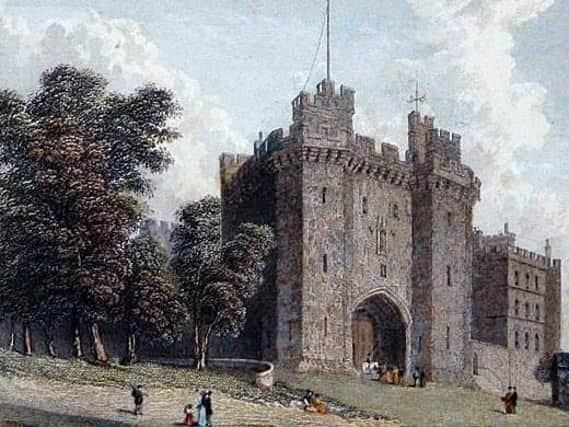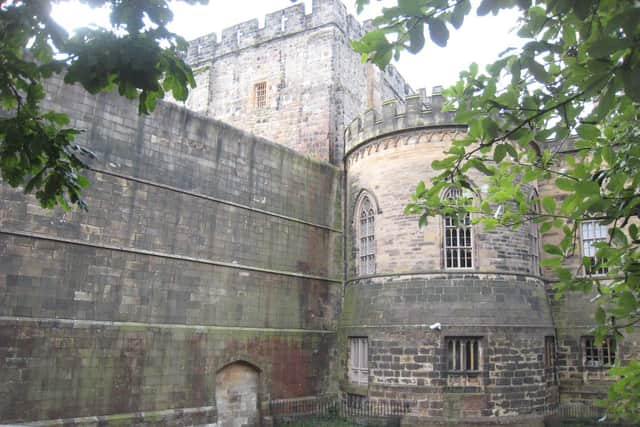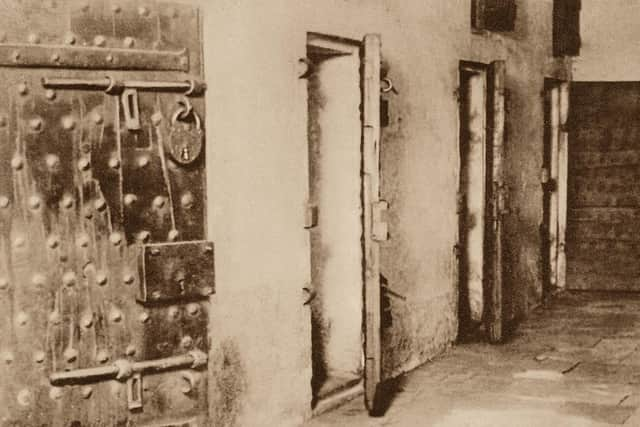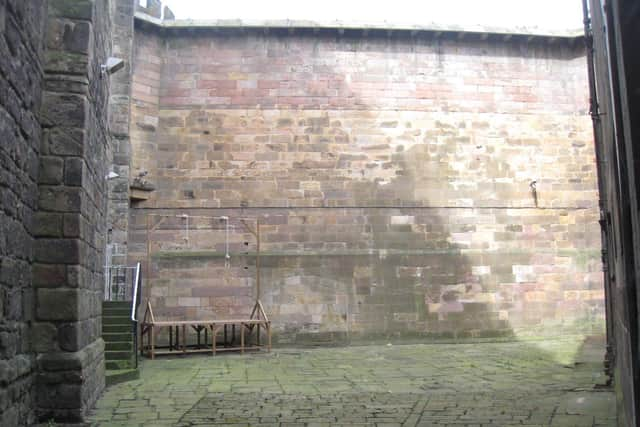Lancaster's gruesome history as the north's 'hanging town'


Lancaster Castle was first used as a prison in 1196 although this role became more important during the English Civil War.
In the late 18th century the castle began to be converted into a prison. The first phase commenced in 1788 with the erection of the Gaoler’s House, followed by the female prison in 1792 and in 1794 the new male prison.
Advertisement
Hide AdAdvertisement
Hide AdA new and larger female penitentiary, designed by Joseph Gandy, which was finished in 1821 and was based on Jeremy Bentham’s panopticon principle of wings radiating out from a central point where the staff could keep watch.


There were 48 single occupancy cells, as at this time it was considered essential for each prisoner to have their own cell. The prison was taken over by the Home Office in 1877. In 1916 Lancaster Castle was temporarily closed as a convict prison and used for German prisoners of war. It reopened as a normal prison in 1954.
It has been said that more prisoners were sentenced to death at Lancaster Assizes than at any other court outside London,Lancaster becoming known as “The Hanging Town” in consequence.
From 1800 - 1865 executions were carried out at “The Hanging Corner”, a small round tower on the east side of the building. On the ground floor of the tower is the “Drop Room” which contains relics of the many executions, and can be visited today. It is quite eerie standing in this room looking at the exhibits and listening to what happened within it. The French windows have also survived and one can look out to the bank opposite where the crowd, often 5,000 – 6,000 strong, would have assembled to watch.
Advertisement
Hide AdAdvertisement
Hide AdThe prisoners were brought into the Drop Room from the condemned cells to be pinioned and say their final prayers before being led forward through the inward opening French windows straight onto the balcony style gallows.


The gallows would have been erected the previous afternoon and consisted of two uprights that were seated into holes cut into the flagstones of the courtyard. A heavy cross beam ran between the uprights with a platform containing the trap doors beneath it at the level of the bottom of the French windows, the platform being draped in a black cloth to hide the legs of the prisoners. High railings surrounded the drop area and the spectators were allowed up to these, within a few feet of the gallows. Many more crowded on to the opposite bank to get a good view of the proceedings. All the public executions used the short drop method of course, so death seldom came without a struggle. After the bodies had hung for an hour they was taken off the rope and taken in through the small lower window.
After 1868 the law required all executions to be in private and these took place in the Chapel yard up again the chapel steps. A purpose - built execution shed was erected circa 1900 in the yard immediately behind the wall of the Hanging Corner, and this still existed when the prison re-opened. It is possible that the gallows may have still been in existence in this shed until the late 1950s.
Between 1800 and 1865, a total of 213 people were executed at Lancaster Castle Six men were hanged in private between 1875 and 1910. Prior to 1800, all Lancashire executions had taken place on Gallows Hill, on the moors outside Lancaster’s southern gate, in what is now Williamson’s Park. It was here that the hangings of nine of the ten Pendle Witches were carried out in 1612 (the other one was hanged at York). They were convicted of witchcraft on the basis of having caused the deaths of seventeen people in and around the Forest of Pendle. As in most other county towns at the time, the condemned were taken to the gallows in a cart, seated on their coffin and “turned off” from the back of the cart.
Advertisement
Hide AdAdvertisement
Hide AdPrior to 1834 there as many as 20 felonies, not just murder, that typically resulted in execution. Of the 213 hangings between 1800 and 1865 only 43 (20 per cent) were for murder. Forty-four people suffered for burglary, others for highway robbery, uttering, arson and sheep and horse theft.


The first hangings at the Castle took place after the Lent Assizes of 1800, when six men were to die on Saturday, April 19 of that year. They were Messrs. John Brady, John Burns and James Weldon for robbing the mail all three of whom were afterwards hanged in chains at Ashton and Samuel Bradford, George McDonald and Paul Hargreaves for the crime of uttering (passing forged bank notes). Saturday was the normal execution day at Lancaster, to be sure of attracting the largest audience for the purpose of maximum deterrence, presumably. This was the only hanging day that year. However 1801 saw the biggest mass hanging, which took place on Saturday, September 12, when eight men were launched into eternity simultaneously, three of them being brothers who had been convicted of burglary. Ten further executions were carried out in this year.
The highest single year total was 1817, with no fewer than 20 hangings.
On April 19, 1817, nine men were “turned off” together for various crimes, up to and including highway robbery. A further multiple execution took place later that year, when on September 8, 1817, four men were to hang. They were James Ashcroft senior, his brother David, his son, also James and his son-in-law William Holden. All four had been convicted of murder and robbery at a house in Manchester. The execution caused much excitement as many people believed that they were innocent. There was to be another family execution in 1827 when George Heyworth and his two sons, William and Roger, were hanged together for highway robbery.
*Thanks to the contribution of the Capital Punishment UK website for all the information for this article.